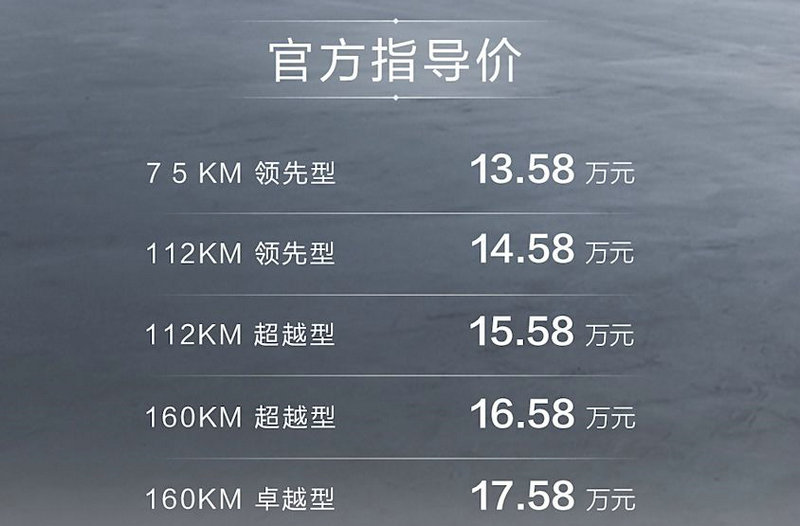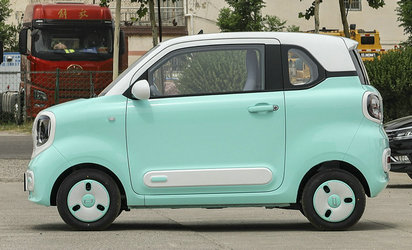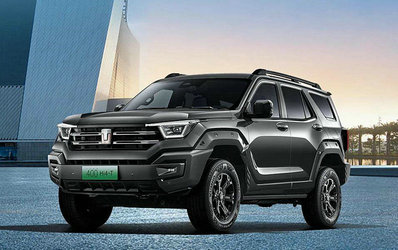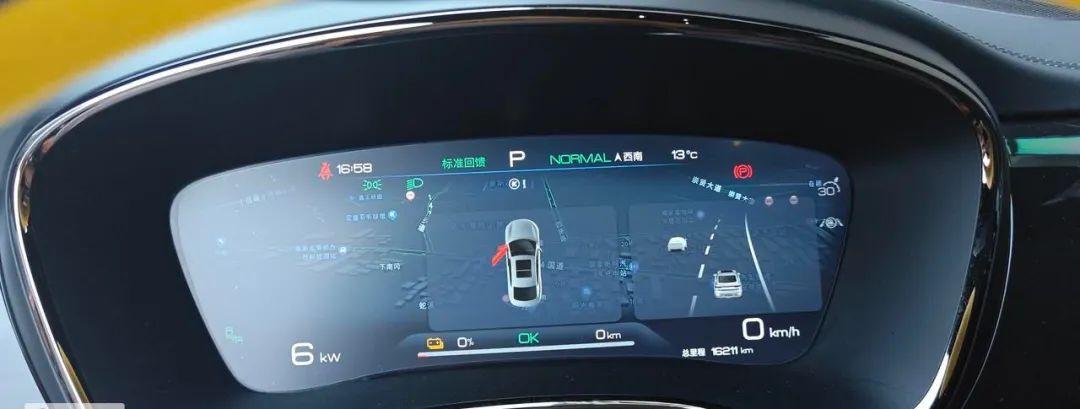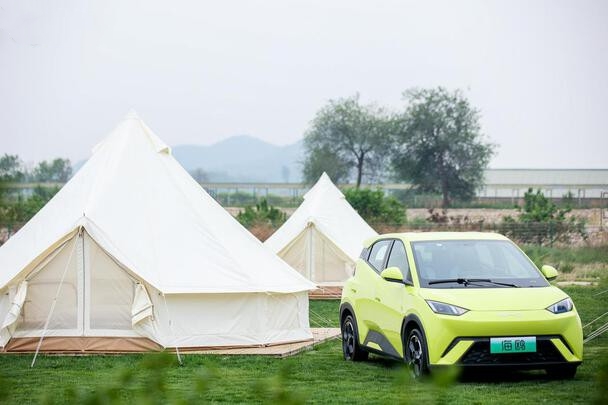Can BYD's sales volume dream come true in 2024?
As we all know, predicting BYD's sales in 2024 is not easy. This issue involves many factors. If the prediction is too high, it may be questioned by netizens; if the prediction is too low, you may even face legal disputes. Therefore, before making sales forecasts for 2024, we should pay attention to and analyze BYD's development dynamics, and give certain encouragement and support to creators.
First of all, according to our forecast conclusion, BYD's sales in 2024 will at least exceed 4 million vehicles, and it is very likely to be between 4.5 and 5 million vehicles.

Next, we will use SWOT competitive situation to conduct a rational analysis of BYD.
1. BYD’s foreign sales forecast in 2024: rapid growth is unstoppable
In future development, BYD's foreign sales are expected to grow rapidly. According to my estimates, BYD's foreign sales will reach 600,000 to 800,000 vehicles in 2024.

The following is an analysis from the aspects of products, sales channels, transportation capacity, overseas factories and brands.
First of all, BYD has done a lot of work in product preparation and launched models more suitable for export. They developed and produced a right-hand drive vehicle, fine-tuned the vehicle to comply with local regulations and market needs, and carried out corresponding model homologation, such as EU vehicle homologation. In addition, they have also adjusted the vehicle software to provide foreign language versions to better adapt to foreign markets.
Secondly, BYD continues to expand its dealer network and sales channels. A large number of dealers, 4S stores and showrooms have been added in 2023, which will provide a broader market space for BYD's sales growth.
Third, BYD has solved the transportation capacity dilemma. In the first half of this year, the transportation capacity of automobile exports was tight and freight rates were high, but now it is no longer tight. In addition, BYD plans to invest in two ro-ro ships in 2024 to further increase shipping capacity.
Fourth, BYD's Thailand factory has an annual output of 150,000 vehicles and has been put into production. This will reduce logistics and tariff costs, lower product prices, and also help seize the market. In addition, BYD is also building factories in Brazil and Uzbekistan, and is selecting factories in Europe and Mexico.
Fifth, BYD's brand awareness continues to increase, and its influence in foreign markets is getting stronger and stronger.
Finally, there is no doubt that Chinese cars, as global commodities, have strong competitiveness. Although it may face certain challenges in the markets of powerful automobile countries such as Japan, South Korea and Germany, and the US market is temporarily difficult to enter, BYD will become the king in the extreme competition and sweep the global market.
To sum up, based on the analysis of BYD's products, sales channels, transportation capacity, overseas factories and brands, I predict that BYD's foreign sales will grow rapidly and unstoppably in 2024. There is no doubt that Chinese automobiles will demonstrate strong competitiveness in the global market.

2. Development of intelligent and electrified technologies
In terms of new technologies, especially intelligent technology, it has become one of the important factors for consumers to purchase cars, especially for models with a price of more than 200,000 yuan.
In fact, BYD has performed strongly in intelligent driving, especially in its breakthroughs in intelligent chassis and intelligent body technology. These technologies enable vehicles to perform well in the "perception and execution" link of the three steps of "perception-decision-execution" of autonomous driving.
In the winter test conducted by the car expert, BYD U8 and Denza N7 performed well in terms of intelligence.

In terms of intelligent driving, BYD adopts a parallel approach of independent research and development and external cooperation, and adopts a variety of technical solutions for parallel development. It is expected that BYD will apply these technologies on Yangwang, Denza, Fangbao, Han, Tang and other models in 2024.
BYD is far ahead of its competitors when it comes to electrification.
For example, they use Yi Sifang platform and Yunnan technology on high-end models, which are industry leaders.
BYD's pure electric models use the CTB platform, which makes the interior space larger, improves handling and comfort, and improves the safety performance of the vehicle, which is also very leading.
In terms of hybrid technology, BYD is also far ahead. They have launched new technologies such as DMI, DMP, and DMO, and will also launch the fifth-generation DMI platform next year, which is expected to be launched on Han, Tang and other models.
BYD is also an industry leader in battery technology, adopting blade battery technology and entering its second generation.
In addition, BYD is a global leader in the field of rail semiconductors. Although it still needs to rely on partners such as Qualcomm for computing chips, it still maintains its leading position in other aspects.
To sum up, BYD leads the industry in intelligent and electrified technologies. Its powerful intelligent driving technology and leading electrification solutions make it the first choice for consumers. In the future, BYD will continue to promote technological innovation and provide users with better products and experiences.

3. Products are the core competitiveness. A number of new models will be launched in 2024 to increase market share.
In terms of vehicle competitiveness, products are the core competitiveness.
In 2024, BYD will launch a number of new models to increase sales and market share.
BYD Dynasty Network will launch new models (volume models) including Yuan Up, Song L, Qin L, Yuan Cross and Dynasty Network MPV.
BYD Ocean Network will also launch new models (volume models), including Hiace 07, A+ class sedan, Ocean A+ class sedan, hatchback rear-wheel drive and pickup truck.
In addition, the mid-to-high-end market will also usher in new models, including Formula Leopard 8, Leopard 3, Yang Wang U9, Yang Wang U6, as well as Denza's coupes and large SUVs.

The launch of new models plays a huge role in increasing sales. For example, the "Seagull" launched in the spring of 2024 contributed to 40,000 sales per month, but this model was not available in the spring of 2023.
For older models, whether they will still be competitive in 2024 depends on the individual models. Some classic models with high sales such as Song Plus, Song Pro, Seagull, Dolphin, Seal, Qin Plus, Han (after facelift), and Tang (after facelift) are still very competitive.
In addition, Han and Tang, two models with high market shares, will also undergo large-scale facelifts and introduce intelligent driving and new technologies.
For models with poor sales in 2023, BYD will revise them to correct market mistakes. For example, the Denza N7 will undergo exterior design improvements, especially the front face design that is considered unsightly; the Corvette 07 will improve its intelligence level and competitiveness, and will be included in the "Sea Lion" series of products.
To sum up, the classic popular models in 2024 such as Song Plus, Song Pro, Seagull, Dolphin, Seal, Qin Plus, Han (after facelift), and Tang (after facelift) will still remain competitive.
In addition, more than 10 new models including Leopard 5, Song L, Qin L, Yuan Up, Hiace 07, Dynasty MPV, and pickup trucks will be launched. The launch of these new models will further enhance BYD's competitiveness and influence in the market.
4. Overall market environment:
4.1 Incremental market: The penetration rate of new energy vehicles continues to increase and is expected to reach 50% in 2024. In particular, the penetration rate of new energy vehicles in fourth- and fifth-tier cities such as fifth-tier cities and counties is relatively low, which will become a huge incremental market for new energy vehicles below 200,000 yuan. BYD's Dynasty Network and Ocean Network have huge potential in this market.
4.2 Competition situation: BYD dares to compete with its competitors in terms of technology, scale and price. Although new car manufacturers are also working hard to develop, and traditional car companies such as Changan, Geely, and Chery are transforming very quickly, they are not yet able to pose a huge threat to BYD. It has certain advantages in market segments such as Ideal and Wenjie, but its scale is relatively small. As for Tesla, its performance in the market is well known.

4.3 The strategy of reducing the price of fuel vehicles to maintain sales has shown to be unsustainable in 2023, which will lead to its gradual decline and the risk of collapse. Problems faced by joint-venture fuel vehicle companies include declining product competitiveness, reduced profits and funds, brain drain, declining new car and core technology research and development capabilities, reduced 4S store sales channels, a significant decline in the value retention rate of used cars, and weakened reputation and brand power.

4.4 Joint venture car companies have fallen into a vicious cycle and are inevitably heading towards collapse. When joint ventures face collapse, BYD will have the opportunity to seize more market share.
To sum up, BYD is expected to sell more than 3 million vehicles in 2024, possibly reaching between 4.5 million and 5 million vehicles, of which overseas sales will be approximately 600,000 to 800,000 vehicles. BYD maintains its competitive advantage in the incremental market and is expected to further expand its market share.
The above is the full content of Can BYD's sales volume dream come true in 2024?

